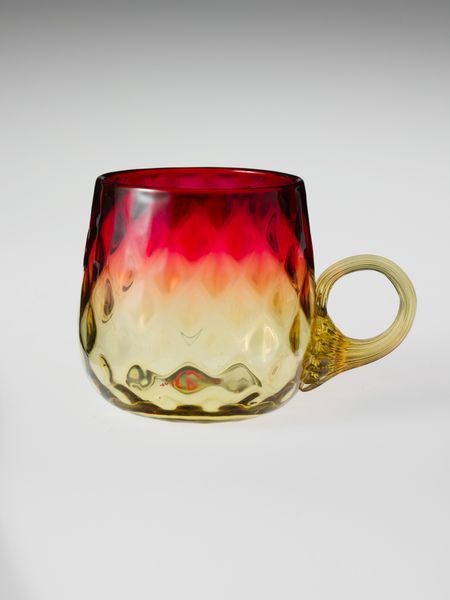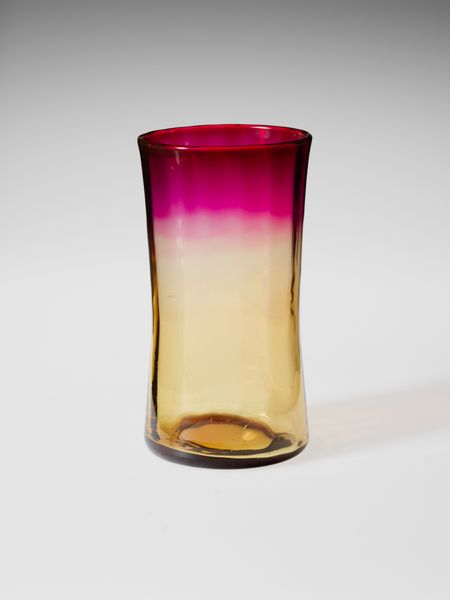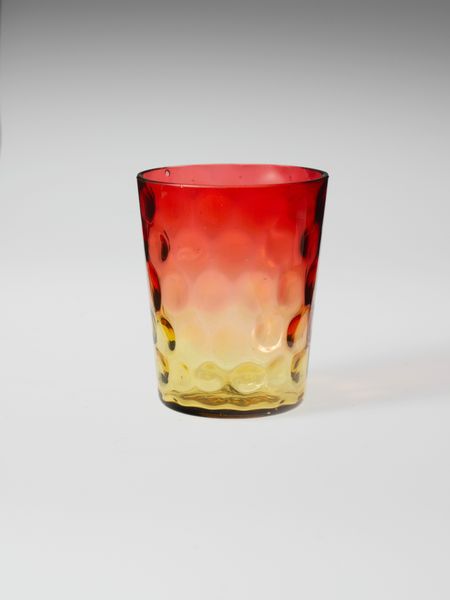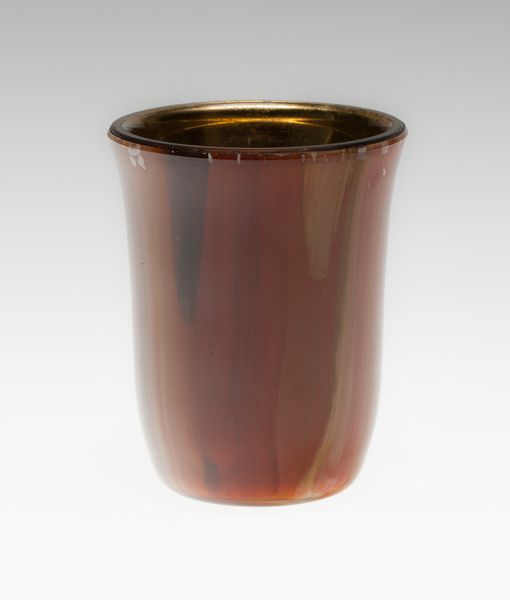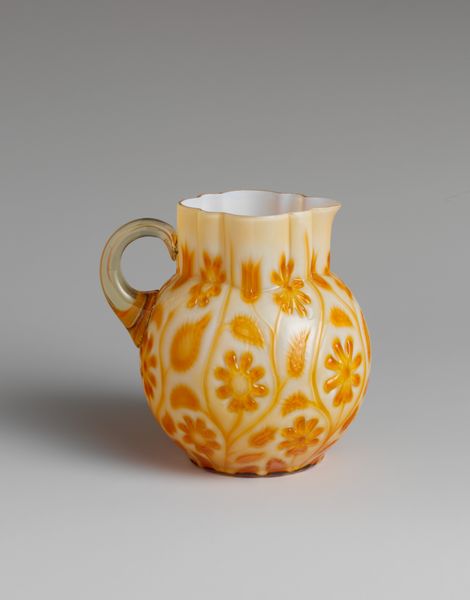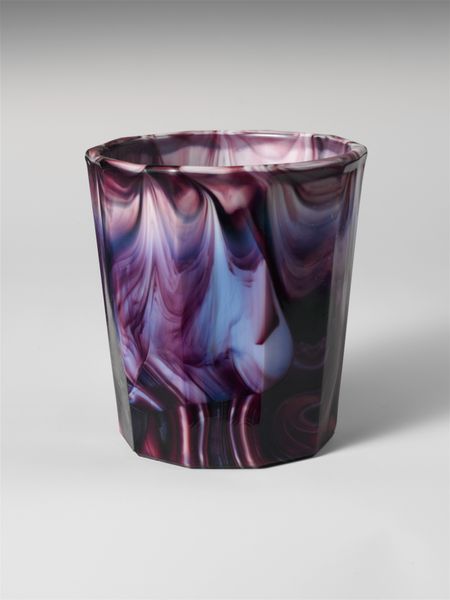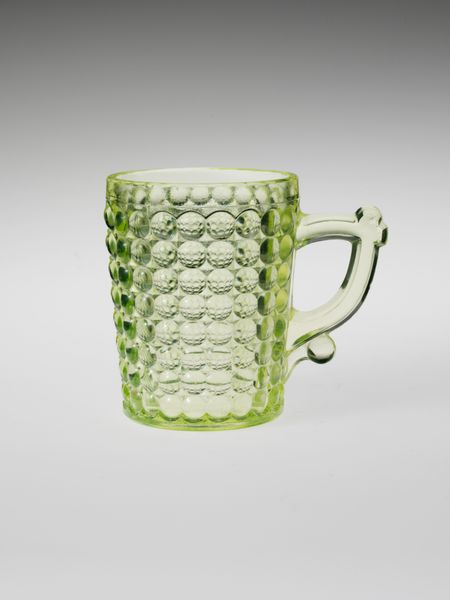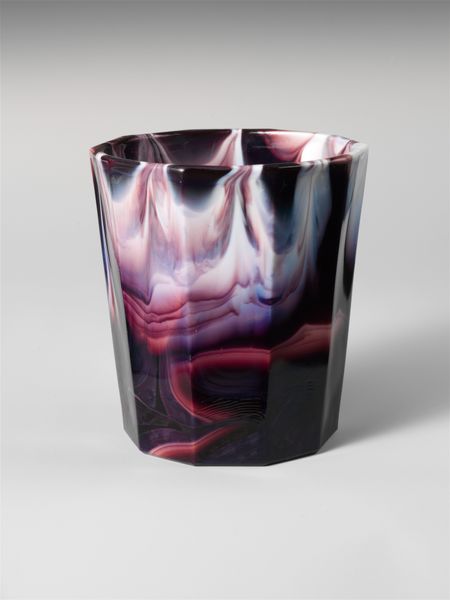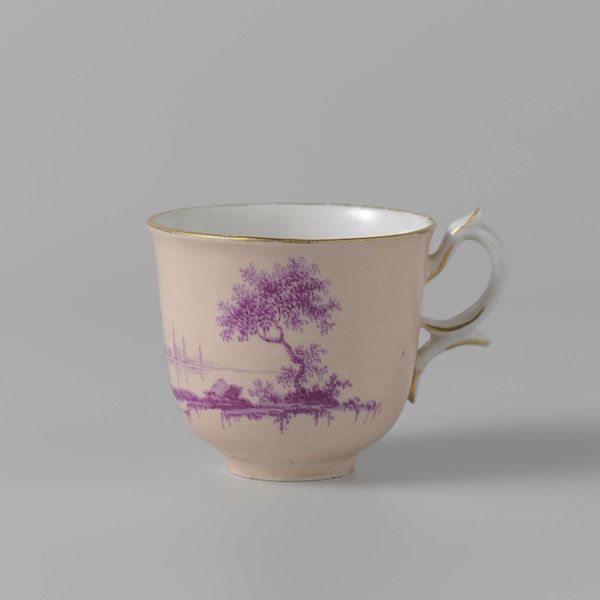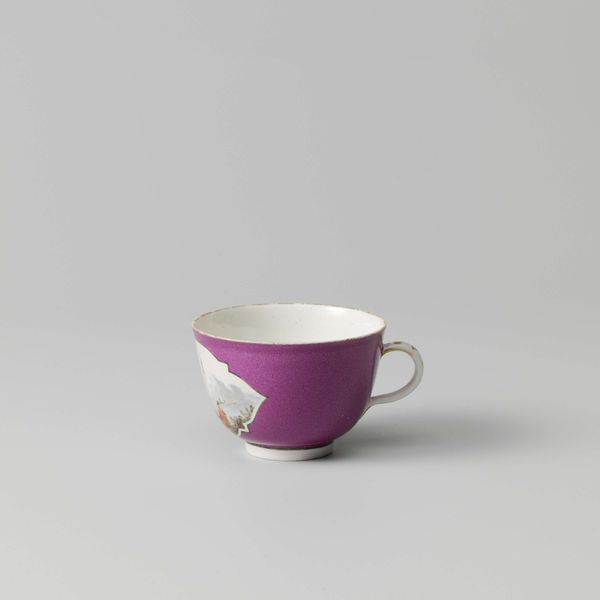
photography, glass
#
studio photography
#
product photograph merchandise
#
advertising product shot
#
product studio photography
#
product fashion photography
#
lifestyle product photography
#
photography
#
glass
#
product design photgrpaphy
#
metallic object render
#
united-states
#
graphic design product photography
#
product photography
Dimensions: H. 3 3/4 in. (9.5 cm); Diam. 2 15/16 in. (7.5 cm)
Copyright: Public Domain
Curator: Looking at this vibrant object, we see a "Punch Glass" made between 1880 and 1888 by the New England Glass Company. It resides here at the Metropolitan Museum of Art. What's your immediate take on it? Editor: It feels almost…optimistic, despite its age. The color gradient—that lovely fuchsia melting into amber—evokes sunset memories. It has the appearance of luxury, but it is likely born of exploitative labor practices. Curator: Indeed. Beyond the beautiful colors, consider the symbolism. The punch glass was a staple of social gatherings, communal sharing and, of course, Victorian refreshment. These weren't just for individuals, but for groups, celebrations... Editor: So, a vehicle for shared experience. Yet, this object, made during a time of rapid industrial growth and social disparity, surely represents that complex layering. Whose hands crafted this piece? Who was able to purchase it? Were those that created it ever given the ability to enjoy the communal benefit it offered? Curator: An astute point. While the New England Glass Company was known for innovative techniques like colored glass production, understanding who profited from such luxury and whose labor fueled it is key. Editor: And the act of drinking punch itself! Think of the ingredients: imported spices, often connected to colonial exploitation. Even something as simple as enjoying this glass implicates us in broader, sometimes troubling, global histories. Curator: Very much so, the form of the glass as a social unifier becomes something to question if viewed in terms of wealth, race, gender, and accessibility. Editor: Precisely. It's a gorgeous object, a visual treat but beyond aesthetics, we must grapple with the stories it silently tells about labor, commerce, and power during its era, its impact on societal hierarchies, and consider, does an aesthetic design cancel out human exploitation? Curator: The color itself even contributes to the dialogue! Consider that deep purple or ruby color, popular at the time but achieved with heavy metals... lead. Was its beauty potentially poisonous, much like some of the social dynamics surrounding its usage? Editor: Exactly! It’s a small object laden with layered complexities, its beautiful colours belie hidden histories and raise very difficult social justice issues. Curator: A small glass, yet a reflection of so much more. Thank you for revealing the symbolism. Editor: Thank you, it feels important to situate these artworks in social and historical perspectives.
Comments
No comments
Be the first to comment and join the conversation on the ultimate creative platform.
